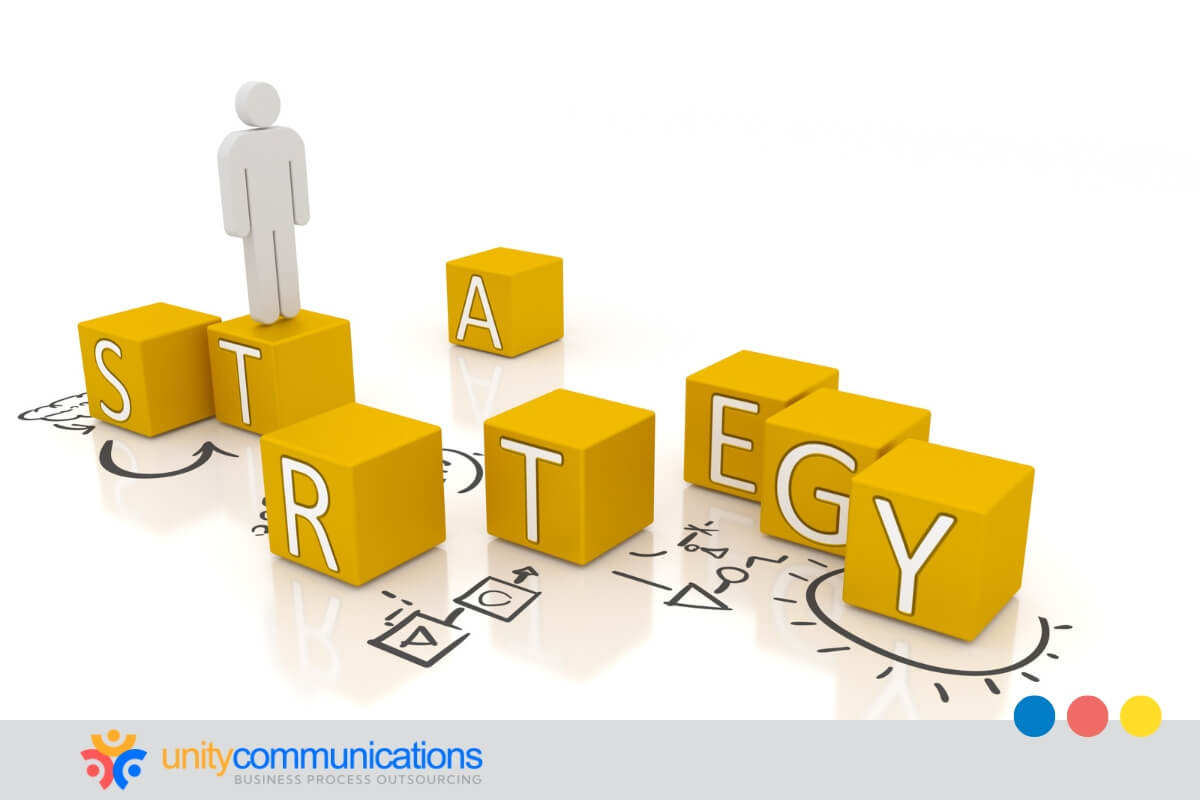Table of Contents
Business process outsourcing (BPO) firms provide access to skilled professionals and robust technologies. They help address staffing shortages without overspending.
However, what if you want to avoid signing a permanent contract to leverage third-party expertise?
Staff augmentation is a worthy alternative to address such concerns. The model is a temporary but powerful solution to scale operational capacity while cutting expenses.
Do you already know how to harness staff augmentation in BPO? No?
This article has got you covered. Read until the end to learn more.
Key concepts of staff augmentation in BPO

Staff augmentation involves hiring third-party experts to fill skill gaps in your one-time projects. Outsourcing offers significant cost savings and enhanced productivity without onboarding or training full-time employees.
For instance, your company aims to build and launch an e-commerce app within two months. However, you only have a three-member software development team. You need at least seven people to make the rollout successful.
Note that recruiting qualified software developers usually takes four to six weeks. The period can be further extended if the candidate you want to sign backs out.
The staff augmentation model lets you easily employ four more developers in less than a month or even a week. This benefit allows for quicker app completion and launch. Besides, you do not have to train them extensively or give them separation pay once your app hits the market.
Before working with a third party, remember these types of BPO staff augmentation models to find the one best suited to your project requirements and budget allocations:
- Commodity-based staff augmentation involves hiring additional external staff for your business based on seasonal needs rather than expertise level. The team members in this category perform basic tasks, including warehouse work and delivery.
- Skilled-based staff augmentation entails hiring workers with higher education levels and experience. These professionals might also possess skills not readily available in other companies. Data entry and customer service fall under this segment.
- Highly skilled staff augmentation includes partnering with specialists who handle complex functions such as website development, content creation, and legal work. These specialists provide support services to your in-house team whenever necessary.
- Short-term staff augmentation means contracting third-party professionals for one-time projects that could last weeks or months. Typically, augmented staff members are needed to meet urgent demands, such as during holidays and emergencies.
- Long-term staff augmentation covers one-time efforts that last longer than six months, such as software or app development and testing. This model helps prevent employee turnover and burnout.
Pros and cons of staff augmentation for BPO clients

Working with a staff augmentation provider requires your business to weigh the pros and cons. It helps you make informed decisions on how to match the model to your operational capacity and budget. Here is what BPO staff augmentation brings to your enterprise.
Benefits of employing augmented staff
- Enhanced scalability and flexibility. A staff augmentation company helps you scale your workforce up or down based on project requirements and seasonal demands. It provides a skilled workforce that can quickly adapt to changing workloads.
- Reduced overhead. Temporarily leveraging third-party professionals lets you control operating costs effectively. Staff augmentation solutions allow you to avoid the long-term financial commitments of hiring permanent workers.
- Immediate access to specialized skills. Wiley’s recent research noted that 69% of businesses experienced skill gaps in 2023. The lack of career development efforts drove the shortfall. Staff augmentation addresses such gaps by providing trained and proficient workers capable of effectively handling diverse and complex tasks.
- Faster onboarding. You can swiftly onboard third-party professionals. They do not need extensive training as they are already proficient in their fields. This capability minimizes downtime and ensures seamless integration into ongoing or urgent projects.
- Customized services. BPO staffing agencies tailor specialized teams according to your unique project requirements. This advantage improves operational efficiency and personalizes output. It also allows you to focus on your core competencies.
- Global talent optimization. Staff augmentation enables you to tap professionals with diverse cultural backgrounds. This benefit also lets you utilize world-class skills your local market may lack.
Drawbacks of employing augmented staff
- Cultural and linguistic differences. Integrating external staff with diverse backgrounds into your in-house team can be challenging. If not addressed early on, it might result in misunderstandings and conflicts of interest. Time zone variations also contribute to possible collaboration issues.
- Data security issues. Working with a third-party workforce usually involves online data exchange through email and other collaborative platforms. According to research, 94% of businesses dealt with email phishing in 2023. Failing to strengthen protection before hiring augmented staff makes your sensitive data susceptible to cyberattacks.
- Company image concerns. Staff augmentation provides a transient BPO workforce. Although these professionals have the right skills, having workers frequently join and leave projects can tarnish brand identity and institutional knowledge.
- Overreliance problems. The heightened focus on cost reduction and efficiency can lead to overdependence on third-party teams. This makes your business vulnerable to disruptions if the staffing agency faces challenges or discontinues services. It can also diminish or cause the quality of your business offerings to be inconsistent.
Strategies for effective implementation of staff augmentation

Staff augmentation is a temporary but effective way to solve your skill and workforce shortages. However, careful planning and management are still required to maximize this model’s benefits and minimize its drawbacks. When implementing this strategic approach, you must consider the following methods:
- Clearly articulate the goals of adopting staff augmentation. Identify specific skill gaps, project requirements, or areas where your business needs third-party expertise the most.
- Conduct a comprehensive needs assessment. This action helps determine your staff augmentation objectives and the exact skills your project requires. It also assists in selecting the right professionals who match your organization’s targets.
- Develop a plan to align staff augmentation with your business strategy. Ensure that this implementation technique supports both short- and long-term objectives. It should also outline ways to address potential risks and measure achievements.
- Establish core communication channels. Choose which platforms you will use to coordinate projects with the augmented team. These core channels should facilitate smooth and effective collaboration between in-house and third-party professionals. Also, remember to schedule regular updates, meetings, and feedback sessions.
- Set clear project expectations. These include timelines, deliverables, and performance standards. Establish a shared understanding of roles and responsibilities among both in-house and external team members. Avoid ambiguity to ensure everyone understands their contributions to the initiative.
- Implement a concise onboarding process. Provide the augmented staff with access to your necessary information resources, product manuals, and systems. This step guides them to accomplish tasks quickly and effectively.
- Foster cultural integration between in-house and external teams. Encourage inclusivity and create a supportive work environment. This action helps avoid delays due to misinterpretations and unnecessary conflicts.
- Implement performance monitoring and evaluation mechanisms. Develop key performance indicators (KPIs) to measure the success of staff augmentation. Use quantifiable metrics to assess BPO professionals’ impact on project milestones.
- Ensure adaptability. Verify whether the augmented staff can adjust to unexpected or rapid changes in your project requirements and timelines. Their flexibility is vital to meeting your business’s evolving needs, especially during hectic seasons.
- Create and execute risk management strategies. These techniques should address turnover, data security, and regulatory compliance challenges. Establish a conflict resolution mechanism to resolve interpersonal issues between augmented and in-house staff.
- Build strong relationships with staffing agencies. Negotiate clear contract terms and conditions, especially when you need the provider’s support in the long run. Also, communicate expectations, provide suggestions, and address issues promptly to maintain a positive partnership.
- Comply with local labor laws and contractual obligations. Ensure the augmented team adheres to relevant rules and regulations at the government and enterprise levels. Work closely with legal experts to address potential legal or compliance issues related to staff augmentation.
The bottom line
Recruiting and training full-time workers is time- and resource-consuming. Looking for the right experts can delay your one-time projects, especially when they require urgency due to increasing market demands. It also drains your budget because you need to meet these professionals’ salary expectations.
Staff augmentation helps you address such challenges at competitive hourly or project-based pricing. This BPO model delivers skilled professionals who can swiftly adapt to your requirements and complete your short-term efforts.
Ready to augment your staff? Let’s connect today and find out how Unity Communications can assist you in relieving your pressing enterprise needs.



